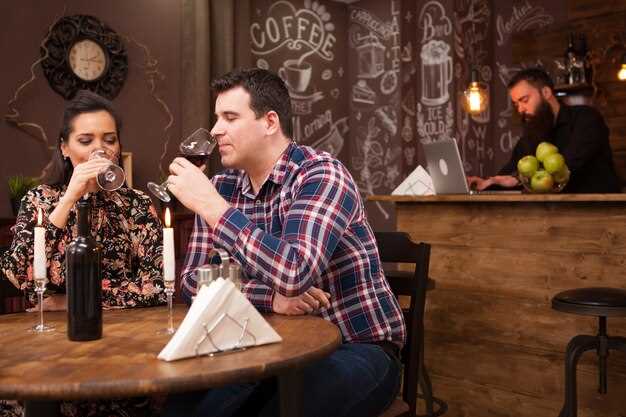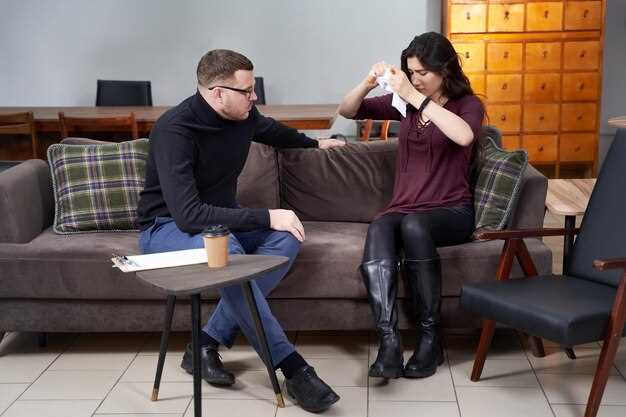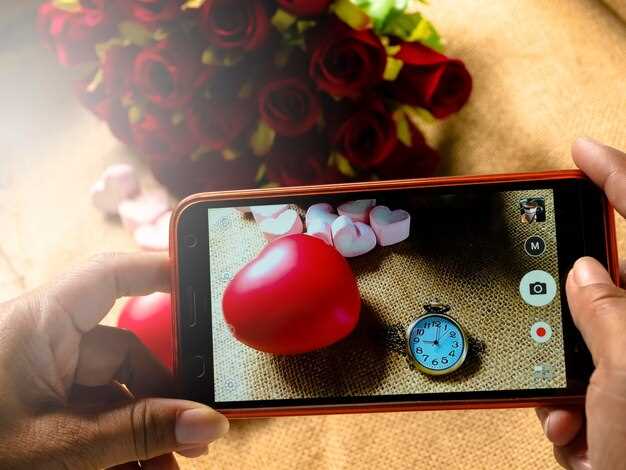Timing: Aim to stay between 45 and 75 minutes on the initial meeting unless youre both clearly enjoying an extended evening; if the vibe wasnt mutual, leave politely after about forty-five minutes. Reserve a window of fifteen minutes before and after the planned time for transit or brief delays; this prevents rushing and shows reliability.
Seating and body language: Sit at a 30–60° angle rather than directly face-to-face; this feels less confrontational and more relaxed. Place your phone face down and check it only once in the first thirty minutes; repeated glances make the other person likely to withdraw. If they check their device more than three times in twenty minutes, treat that as a signal to gently change the topic or wrap up.
Ordering: preview the menu online and pick two safe options – one vegetarian, one protein – that are easy to eat. Avoid messy plates (ribs, saucy pasta) when youve just met; sauces and large bites increase self-consciousness. If youre paying, offer to cover the check up front or split it cleanly; if they insist on sharing, accept a 60/40 split at most. Dont open a discussion about splitting down to cents at the table–decide, then move on.
Conversation: prepare three short prompts (work, recent small win, favorite current show) and two follow-up questions for each. Let stories run 30–90 seconds; if youre the one telling a longer anecdote, pause and ask if they want more details. Avoid exes, salary, or legal disputes. Sometimes people want silence; if there is a lull, name an observation about the place or menu and ask a light question within ten seconds.
Signals and next steps: if they lean in, mirror and maintain open palms; if they step back, decrease personal questions. If youre both smiling and theres continued eye contact after sixty minutes, propose a concrete second meeting: pick a date, one specific venue, and a suggested day of the week – for example, “Next Thursday for coffee at 6.” If they say theyre busy, suggest two alternative days and then follow up within forty-eight hours. If they wanted to decide later, set a firm check-in time rather than leaving it vague.
Common pitfalls: dont dominate the conversation, dont overshare medical or family trauma, and dont appear totally transactional by focusing only on paying or logistics. If a memory went sideways (you heard a name wrong), correct it quickly: “Sorry, I think I misheard you earlier.” Small errors get forgiven if youre calm. I once went to Palizzi with a friend who corrected course after a slip and the evening recovered; such adjustments show composure.
Contextual adjustments: if youre senior by a decade or more, avoid patronizing language and ask more about present interests than past achievements. If youve been ghosted before, resist referencing those dates or stories on this meeting; bring fresh energy. After the meeting, send a concise message within twelve hours that references a specific topic from the conversation to show attention to detail without pressuring them to reply immediately.
Actionable guidelines to avoid common missteps on a first date in bars or restaurants
Arrive five to fifteen minutes early to pick a table, scan the menu, and confirm seating protocol so youre ready to greet them without rushing; at venues like durbins staff seat quickly and that extra time prevents awkward starts.
Choose food deliberately: if the menu lists shared items such as chorizo, ask about portioning and allergies before ordering so you dont end up with plates that pair poorly with your preferences; pick one shared item only after you check their comfort and have been told about spice levels.
Limit initial stories to short, specific anecdotes which take fifteen to sixty seconds; people who went deep into personal history often feel overwhelmed and it wasnt enjoyable for either side. If a topic makes you or them feel defensive, change course–dont press for more than the other person wanted.
When paying, state your intention plainly: offer to pick up the tab or suggest splitting, then follow through. If youre senior in age or income you can offer to cover, but dont insist; that approach is likely to be read as considerate rather than transactional. Follow venue protocol when separate tabs are required.
Keep overall time manageable: plan for forty-five to ninety minutes unless both agree to stay longer. Leave room to end on a good note; fifteen minutes of silence should never be stretched into an awkward marathon. If youre interested, send a concise follow-up within a few hours mentioning one concrete thing from the menu or a story they shared.
Mind small signals: if they lean in, thats a great cue; if they pull back, dont move into physical contact. Sometimes conversation drifts into heavy topics where people get heated–pause and ask if theyre okay. For modern dating moments, include a short first-date checklist of three things you should do: arrive early, confirm the bill plan, and order food that suits both tastes.
| Error | Quick fix | When to act |
| Showing up late | Text estimated arrival and arrive within fifteen minutes | Before seating |
| Ordering heavy shared dishes | Ask about chorizo or spice, then pick a neutral option | While scanning the menu |
| Monologuing | Switch to a short story and invite their input | After thirty to sixty seconds |
| Ambiguous payment | State whether youre paying or splitting | When server brings the check |
Choose a venue with balanced vibe and easy exit
Pick a place with midlevel ambient noise (60–70 dB), visible exits and tables near the door – that layout gives you an easy out and keeps conversation audible.
If youre coming from work, book 6–7:30pm on a weekday or 5–6pm on a weekend; youre more likely to get an intimate corner and enough time before plans wind down.
check the menu online: just pick venues with 6–10 small plates plus balanced mains across three price tiers ($8–12, $13–20, $21+), so food arrives fast and then their menu offers a good range if one of you wants lighter or more substantial orders.
If youve been to a place before and it wasnt what you wanted, choose the other side of the room or ones with patio seating; many of those layouts make it totally unobtrusive to leave mid-evening.
Plan the first-date checklist: confirm parking, how long youll stay, and exit routes; if the vibe feels off, leave politely – youre under no obligation to extend the night.
If youre dating multiple people, separate dates by 3–5 days so youll have time to check notes and think through things; they often lead to a second meet within a week if interest is clear.
Sign up for the venue newsletter to confirm quiet nights and menu changes the day before; these simple checks make a great difference to how comfortable both parties feel. If the date goes well, have a nearby second option in mind.
Plan the bill approach: who pays and when
If you invited them, pick up the bill; if they invited, let them pay; otherwise propose an even split before ordering and be explicit so no one guesses.
Dont assume separate checks are automatic: ask the server at ordering time. If separate checks arent possible, calculate each share on the itemized receipt, add tax and tip, then round up so no one ends up short. Example: $75 food subtotal + fifteen% tip = $86.25 total; two people = $43.13 each, round to $44 each to cover small service fees.
Use these mechanics: request separate checks at the host stand, or get one receipt and split by items; if paying by card, ask the server to run multiple cards or collect one card and transfer funds later via apps. If one person is paying because they offered, let them hand the card to the server; if both reach, pick a quick rule–whoever suggested the place or offered to pay should complete the transaction.
If the plan wasnt formed before you left work and you went straight from the office at night, say so: “I wasnt planning on that price, can we split?” Saying it early avoids awkwardness later. If you went to durbins and the ambiance was great but the bill wasnt expected, be transparent about budget next time so both feel comfortable together.
Social signals: never insist if their partner or husband steps in for a group tab; dont interpret that as a personal slight. If one person orders a single expensive item while the other keeps it simple, split the shared items and have the other pay for their single upgrade. If you think splitting evenly isnt fair, explain the numbers and offer to pay the difference–most people feel better with clarity than guessing.
Practical rule set to follow: offer to pay if you invited; ask about splitting before food arrives; tip 18–20% as standard but adjust by service; use receipt math or apps for later transfers; keep all checks or screenshots together so both have a record. Sign up for the venue newsletter for promos that reduce cost next time and build a simple habit so paying together becomes predictable and good for both.
Dress for the setting and keep grooming sharp
Pick a jacket and shoes that match the venue: tailored blazer or navy sport coat for finer restaurants, crisp button-down and dark denim for neighborhood spots; check shoe polish, replace belts over 2 years old, and avoid branded logos that clash with the ambiance at places like palizzi.
Keep grooming exact: haircut refreshed within 3–6 weeks, beard trimmed within 24 hours, nails clipped and cuticles kept tidy, hair product applied sparingly so youre not shiny; use just one subtle scent (1–2 sprays behind the ears), chew sugar-free gum 10 minutes before sitting to control breath after spicy food, and allow a 15–20 minute buffer so you arent rushed when youre going to meet someone.
Choose clothing that flatters your form and avoids looking poorly fitted – ill fit can add 5–10 years or push your look down-market. If they ask about paying, offer a clear plan (split or cover this time) rather than a vague promise; when conversation stalls, pick short stories under 90 seconds, then ask about their work or what theyre into. Single people who want more second chances should keep details good and honest, dont overshare senior-level drama from previous years, and steer away from topics where strong opinions are already formed.
Lead with conversation: prompts, listening, and pacing
Ask two specific prompts within the initial 5 minutes: “What made you pick this place tonight?” and “What are you into outside work?” Keep each prompt under 12 words and pause 2–3 seconds for an honest answer.
Aim to listen 60–70% of the time; allow enough silence (3 seconds) after someone speaks so they expand. If a story runs past 90 seconds, summarize in one sentence and ask one targeted follow-up–that shows you heard there are details that matter without dominating the time.
Use concrete opener options: “What’s the best meal you’ve had this year?” “Which project takes most of your attention right now?” If food comes up, reference specifics: “That chorizo at Palizzi was fantastic – what about their ambiance draws you?” If they mention Durbin’s or another local spot, ask what about the night there wasnt what they expected.
Follow a three-exchange rule for topic threads: ask, listen, then ask one clarifying question; sometimes a second deep question is useful, more than that takes the conversation into overshare. If a subject stalls after two turns, pivot to a new, related prompt within 15–30 seconds.
Introduce intimate subjects only after mutual disclosure: when both people have shared at least three facts and about 25–30 minutes have passed. If someone says they worked at a place for fifteen years, respond with “What changed after year fifteen?” rather than offering your own long anecdote.
Watch micro cues: if they lean in, laugh, or mirror your tone, it feels safe to go slightly deeper; if they glance at their phone or check the time, pull back and ask a lighter question. Dont interpret silence as disinterest–ask one gentle prompt (“Tell me about something that surprised you this year”) before deciding to change the subject.
When paying, follow a clear protocol: offer twice and, if declined, accept after the second offer without commentary. Close the night with a specific, actionable follow-up if you want a second meeting: propose day and activity within 48 hours (“I enjoyed tonight – want to try Palizzi’s weekend brunch on Saturday?”). These concrete steps make future dates more likely and prevent vague “we should” promises.
Use body language and boundaries to signal interest
Open your torso, keep shoulders relaxed and feet angled 30–45° toward them; lean in 10–15° only while they are speaking, hold eye contact 2–3 seconds, then break for 1–2 seconds.
- Things to do: mirror gestures at a 10–20% rate, smile with a soft exhale for 1–1.5 seconds, nod to acknowledge specific stories rather than offering blanket responses.
- Proximity guide: 40–60 cm is conversational; moving inside 40 cm signals more intimate intent – only go there if they step closer or return a touch.
- Touch protocol: a brief forearm touch (0.5–2 seconds) after mutual smiles is acceptable; avoid head/neck touches and any touch that feels like it wasnt invited.
- Eye-contact pattern: 2–3 s on, 1–2 s off; longer stares feel intense, shorter looks feel disinterested – adjust based on their microexpressions which show comfort or tension.
Boundaries and verbal checks:
- Use simple checks: “Is this comfortable?” or “Do you want me to stop?” – these three-word prompts keep things clear and respectful.
- If they mention a husband, stop flirting immediately and reset to neutral topics; if they say single, you can continue light flirting but still check consent before escalating.
- When their phone is face-down and they kept eye contact, they’re likely engaged; frequent glances at the door or repeated mentions of childcare or work often mean they should leave earlier.
Behavioral red flags to note and act on:
- Pushing past a “no” or not respecting a verbal pause – end the interaction and exit the place.
- Complaints about being poorly treated by others, or stories about partners which show unresolved conflict; these ones often mean they’ve been hurt and need space, not closeness.
- Repeatedly paying without asking or insisting on physical closeness despite distance cues – step back and ask a neutral question about their expectations.
Quick scripts and micro-actions to use:
- Script for a check: “I like talking with you – is this okay?”
- Script for pulling back: “I’m going to give you some space unless you want to continue.”
- Micro-action: place your hand briefly on the table edge, palms visible; open palms increase trust and invite them to match.
Contextual examples: if they mention the night went great and later text shows enthusiasm, they were likely comfortable; if their tone kept flat and they texted that they wasnt free, presume low interest. If you shared chorizo or split the bill and both reached for the same plate, that small cooperative moment signals rapport and increases the chance you’ll want a second meeting together. Keep these signals in mind, think about their pacing, check their verbal cues, and act so both of you leave feeling respected and clear about next steps.


 How Not to Blow It on a First Date at a Bar or Restaurant – Practical Tips to Impress">
How Not to Blow It on a First Date at a Bar or Restaurant – Practical Tips to Impress">



 When You Can’t Stop Thinking About Past Relationships – Coping Insights from Nadene van der Linden, Clinical Psychologist">
When You Can’t Stop Thinking About Past Relationships – Coping Insights from Nadene van der Linden, Clinical Psychologist">
 Sleeping with My Ex-Husband – Navigating Post-Divorce Boundaries">
Sleeping with My Ex-Husband – Navigating Post-Divorce Boundaries">
 The Blog – How to Start, Grow, and Succeed with Your Online Journal">
The Blog – How to Start, Grow, and Succeed with Your Online Journal">
 How to Stop Obsessing Over a Crush – Practical Steps to Move On and Reclaim Your Peace">
How to Stop Obsessing Over a Crush – Practical Steps to Move On and Reclaim Your Peace">
 How to Stop Worrying – 11 Steps to Reduce Stress and Anxiety">
How to Stop Worrying – 11 Steps to Reduce Stress and Anxiety">
 How to Deal with Trust Issues and Insecurities in Relationships – 6 Steps to Repair from a Couples Therapist">
How to Deal with Trust Issues and Insecurities in Relationships – 6 Steps to Repair from a Couples Therapist">
 4 Reasons You’re Choosing the Wrong Dating Photos and How to Fix Them">
4 Reasons You’re Choosing the Wrong Dating Photos and How to Fix Them">
 I Spent 48 Hours on a Celebrity Dating App – What I Learned">
I Spent 48 Hours on a Celebrity Dating App – What I Learned">
 Stop Overthinking Romantic Relationships – A Practical Guide">
Stop Overthinking Romantic Relationships – A Practical Guide">
 What Makes the Perfect Dating Profile? 70% of App Users Say This Trait Gives Them the Ick">
What Makes the Perfect Dating Profile? 70% of App Users Say This Trait Gives Them the Ick">